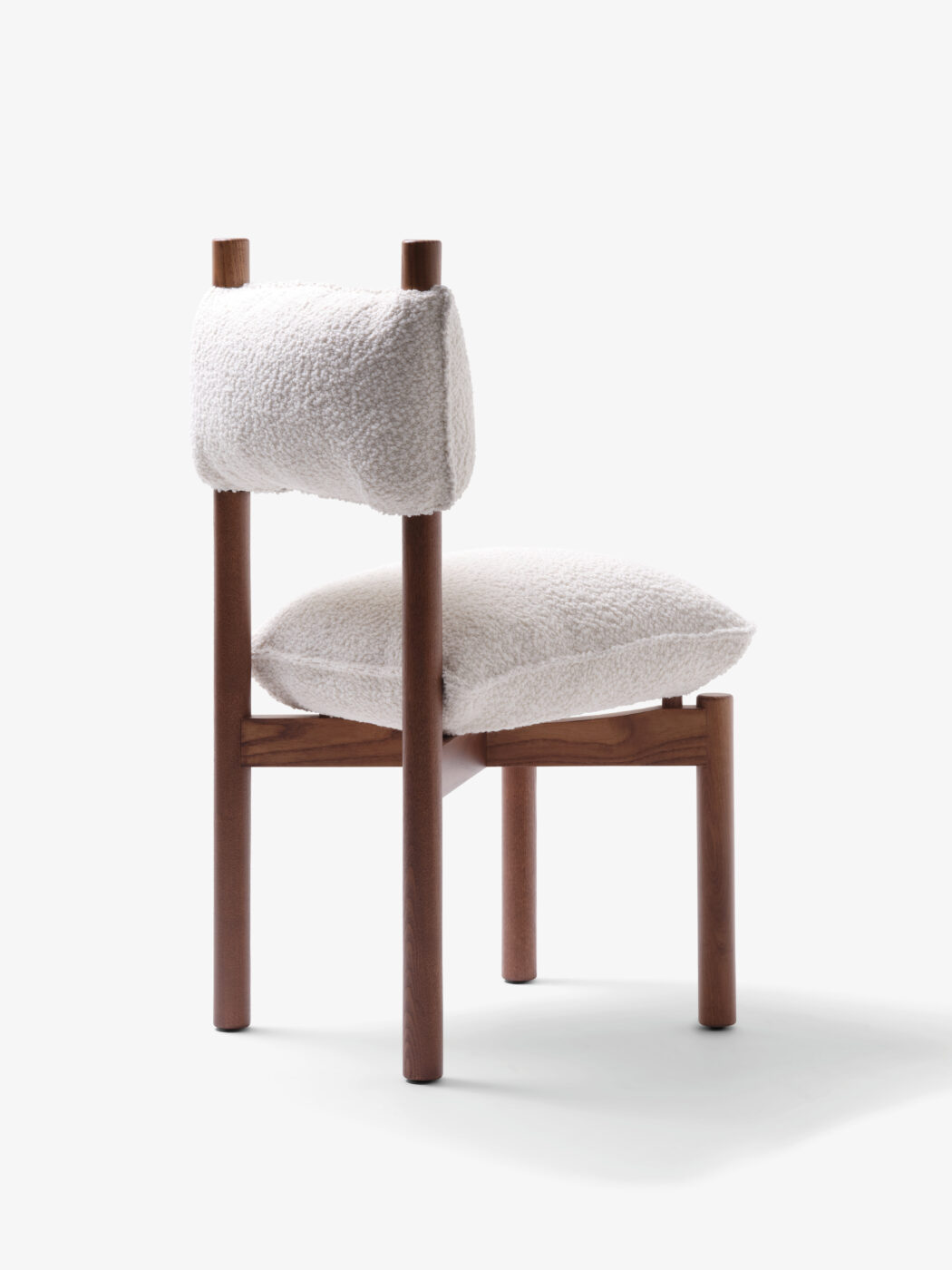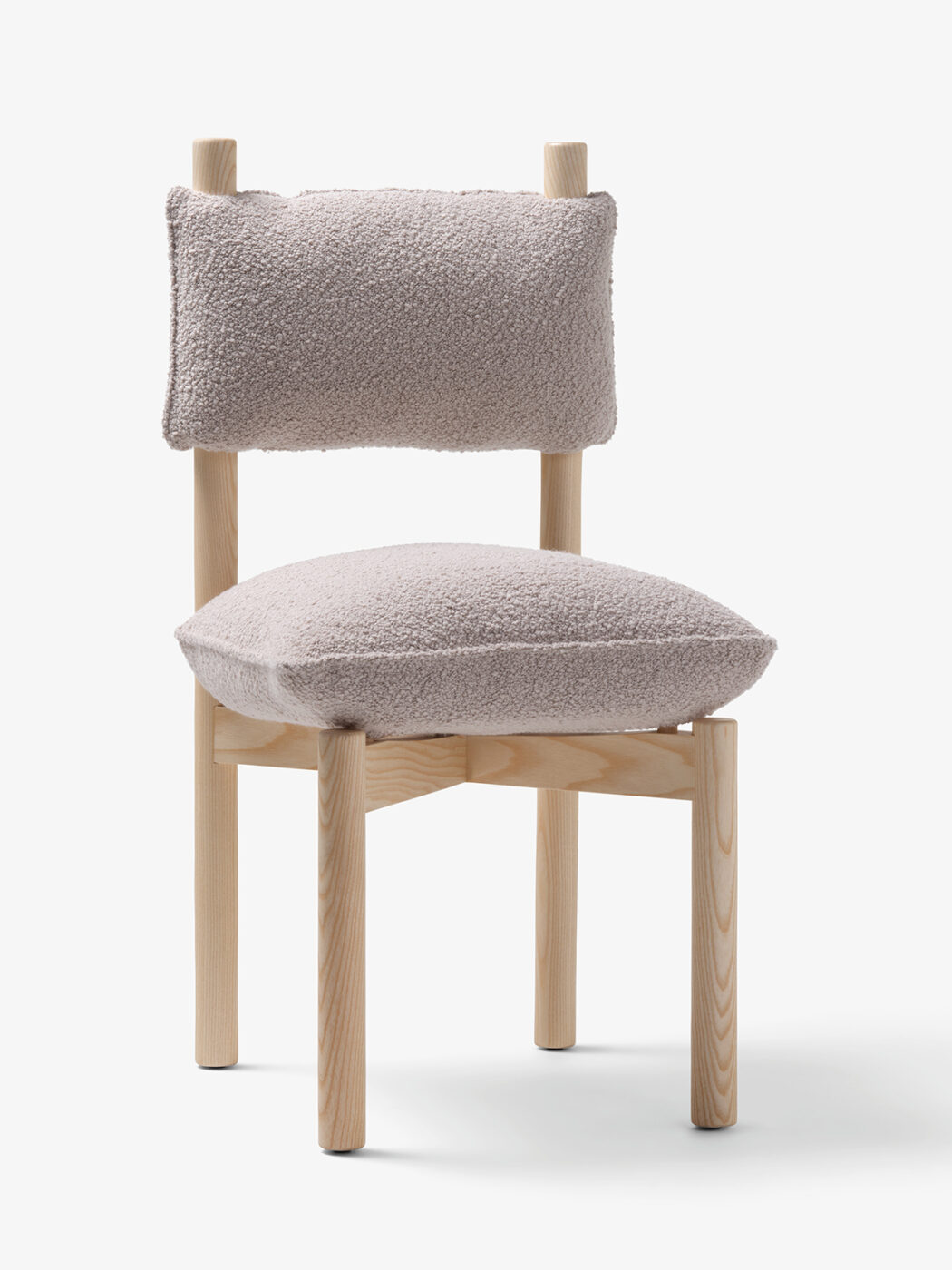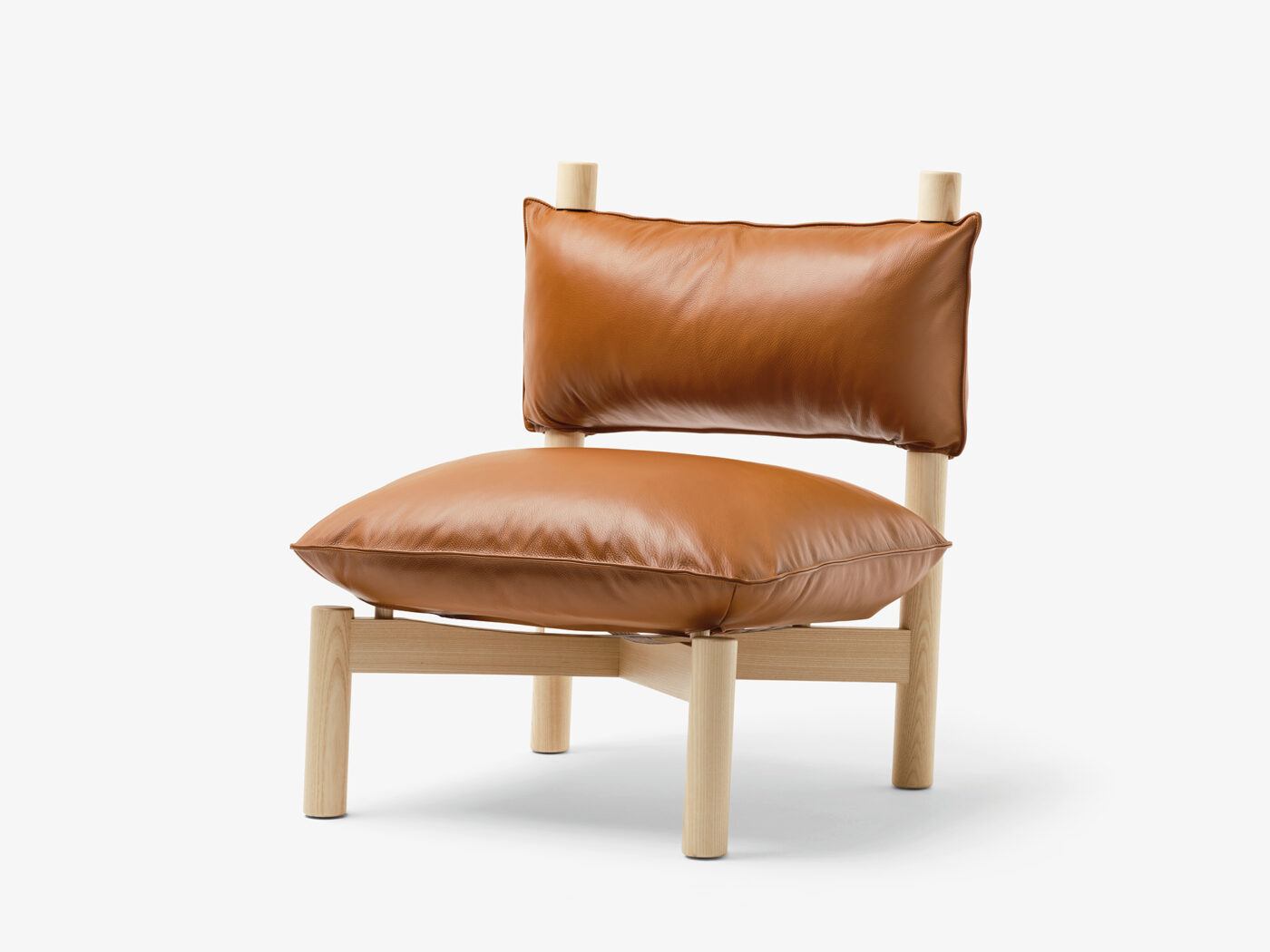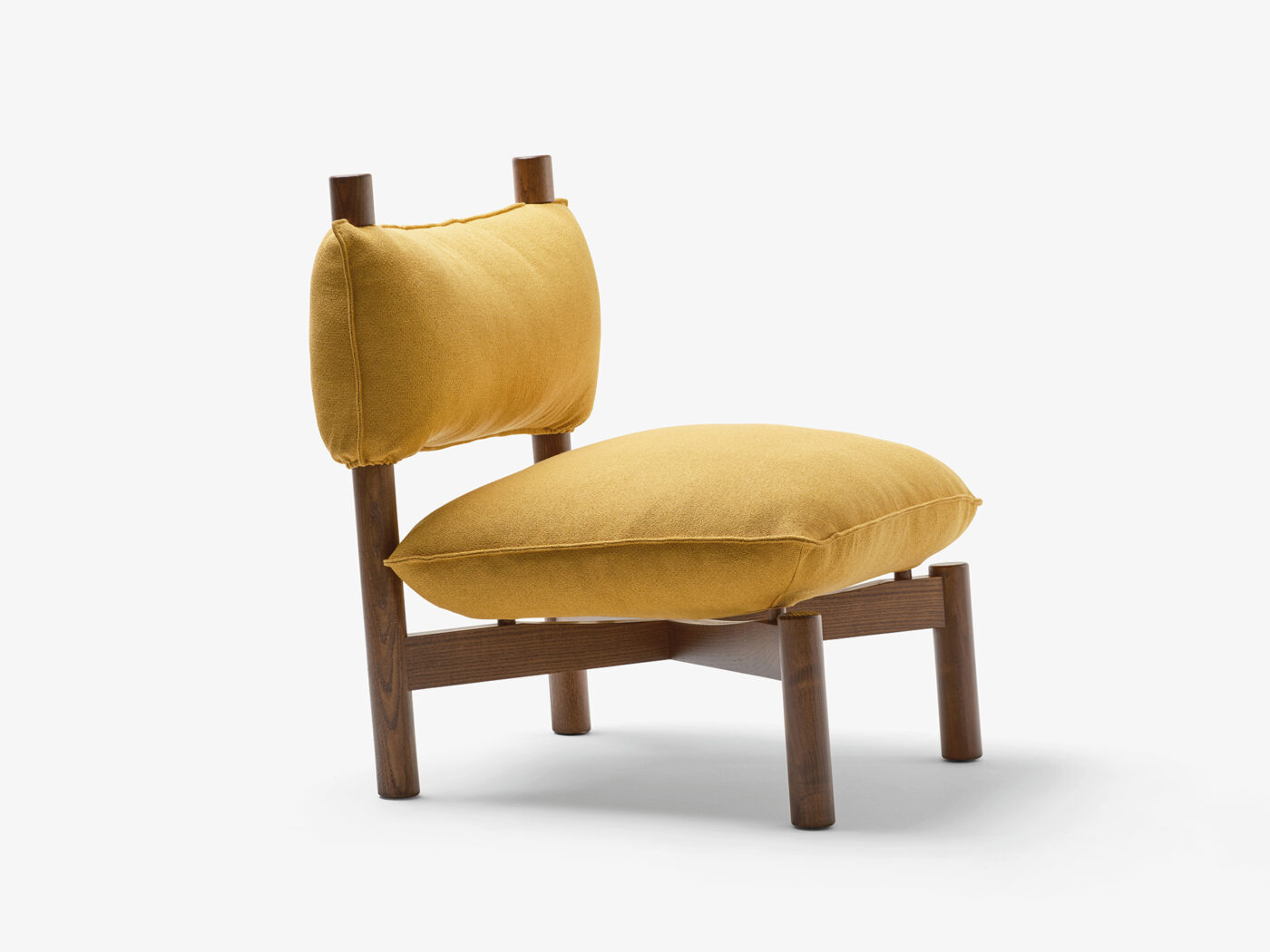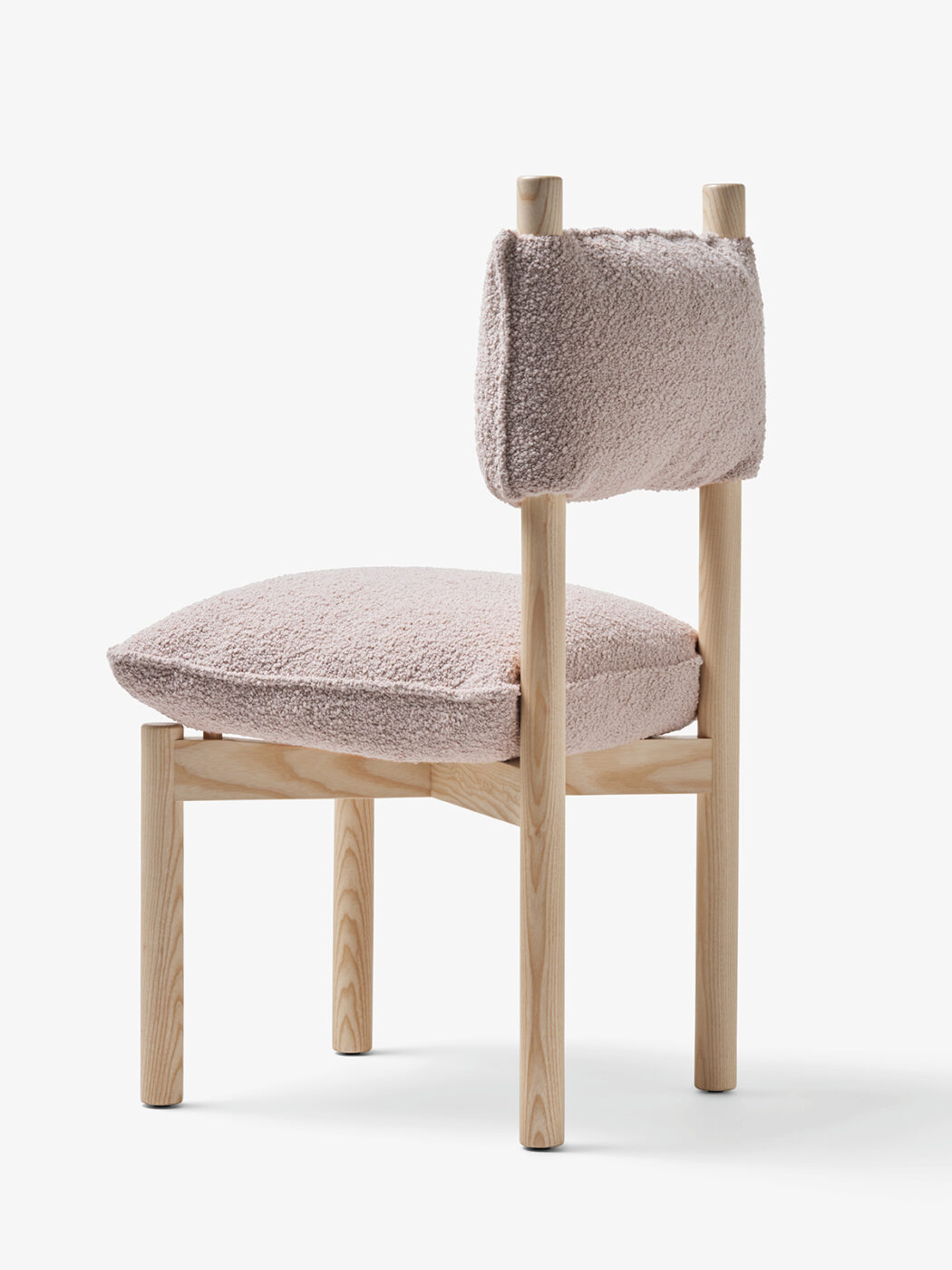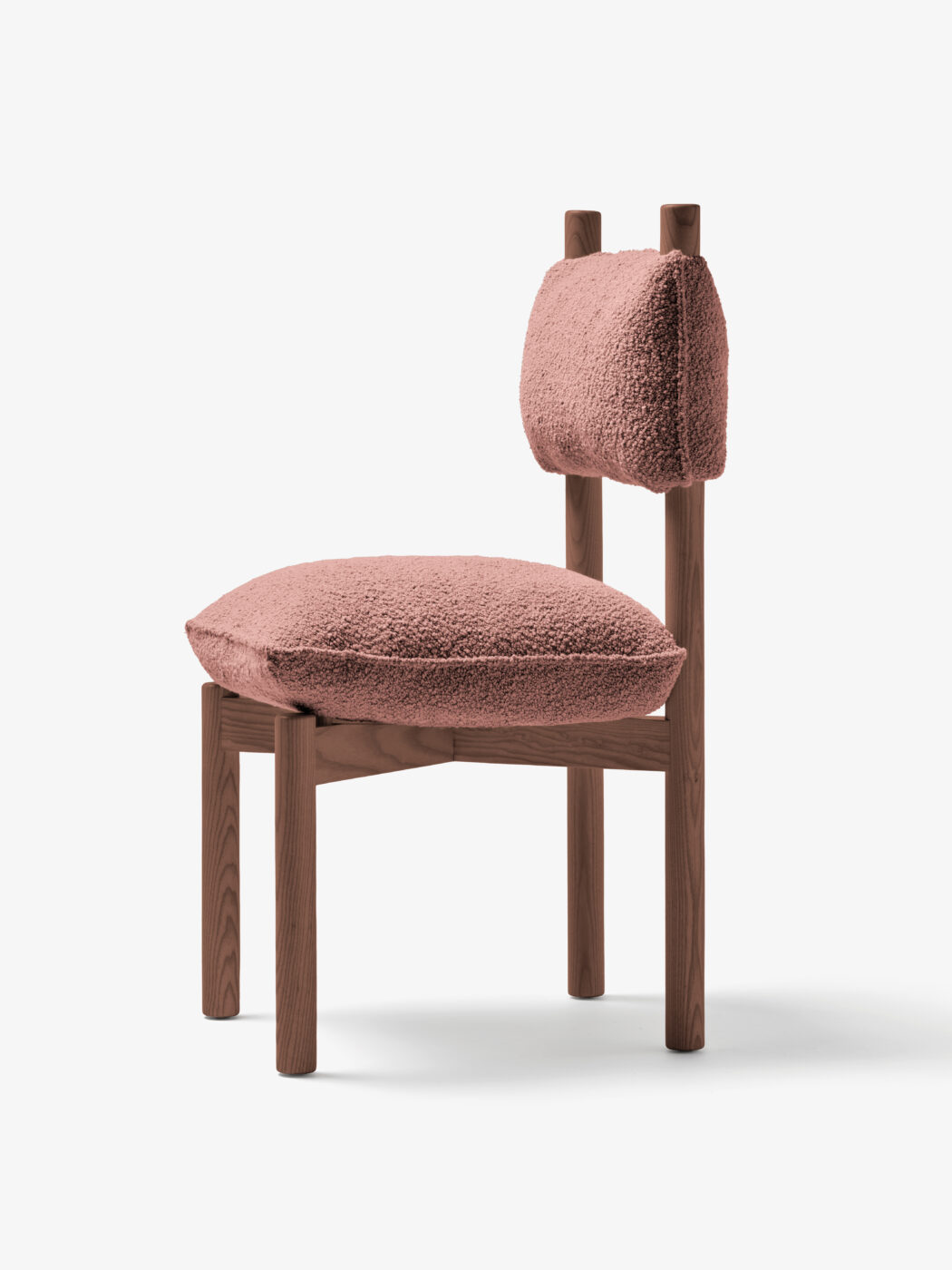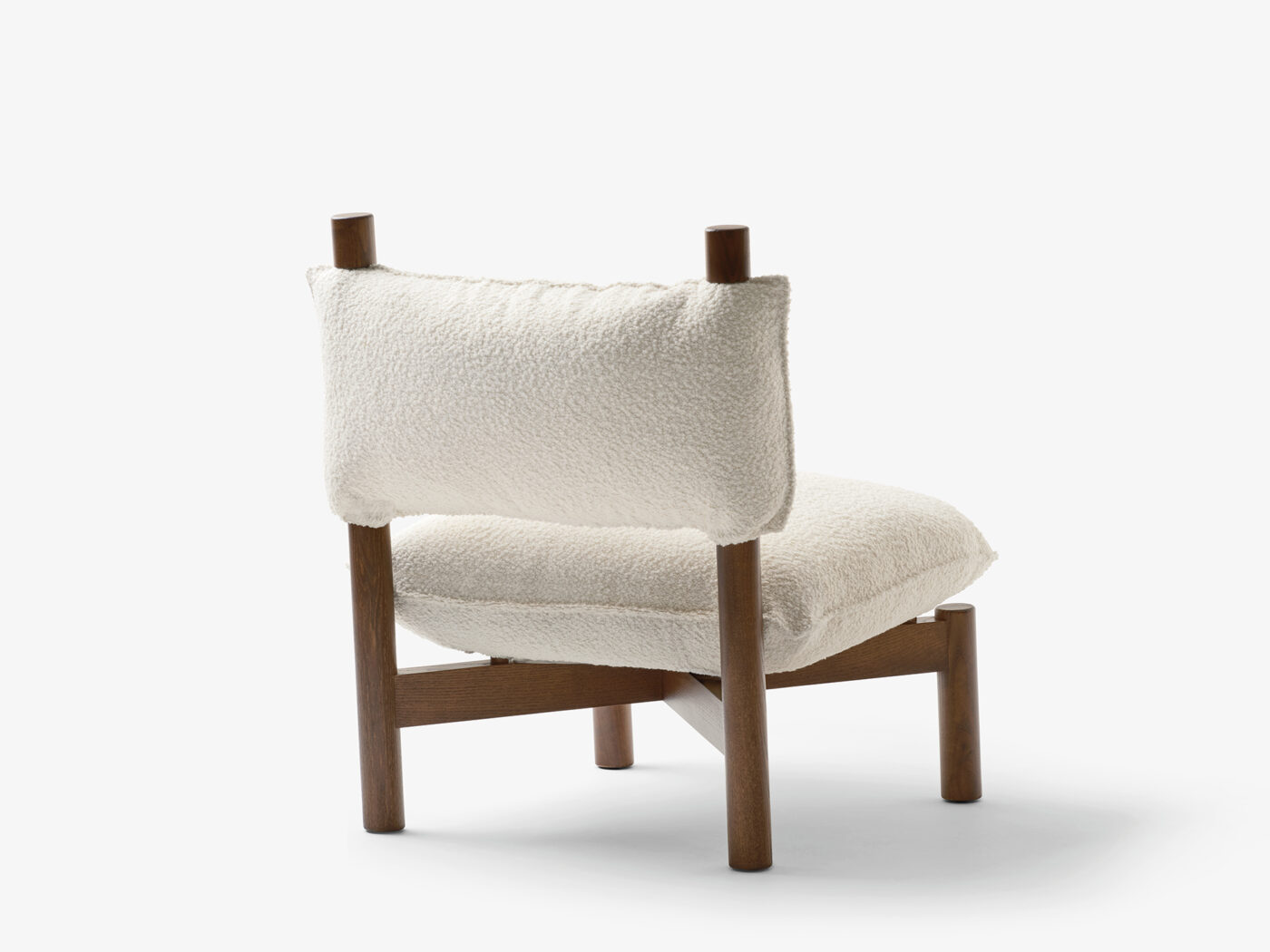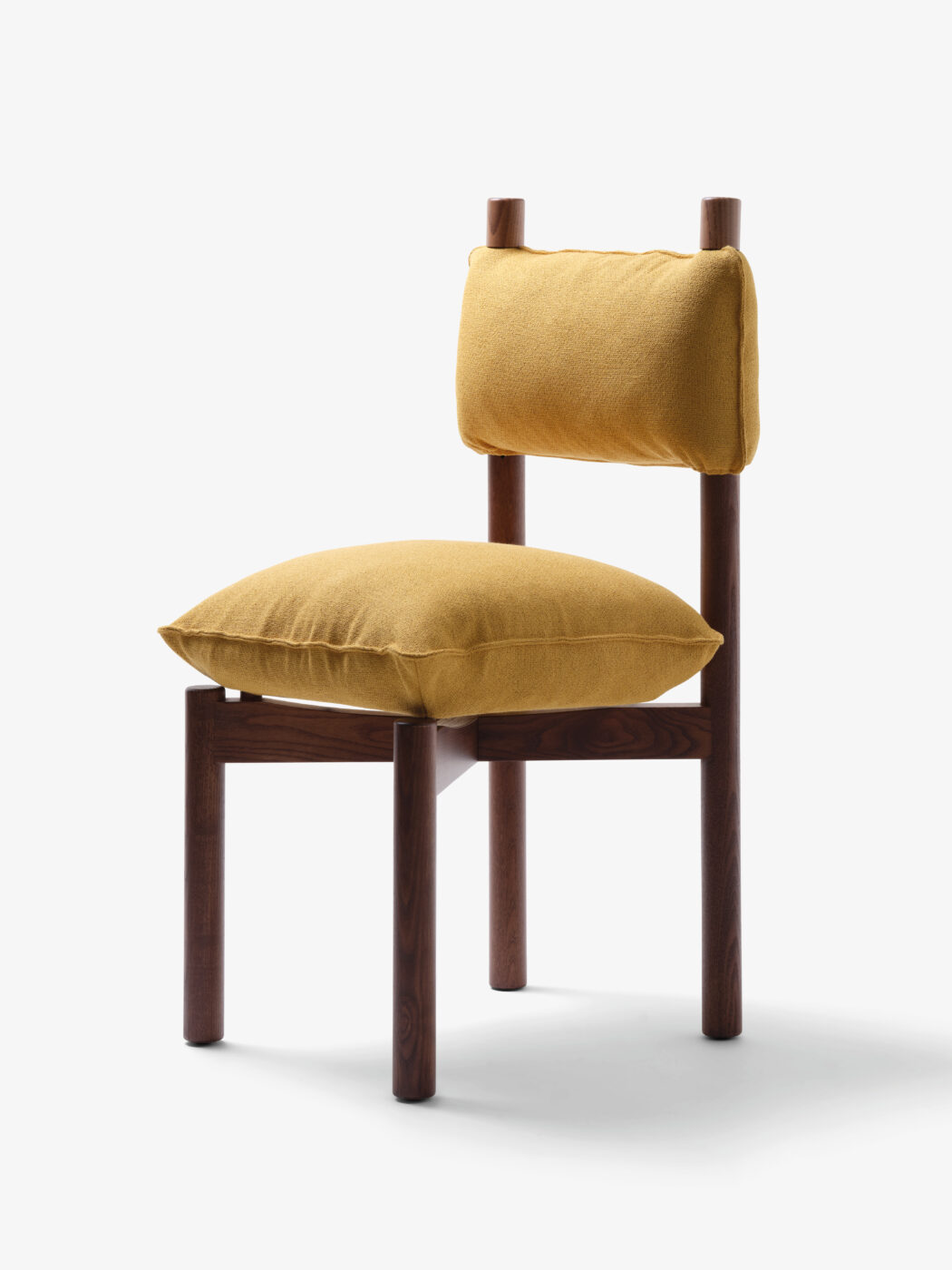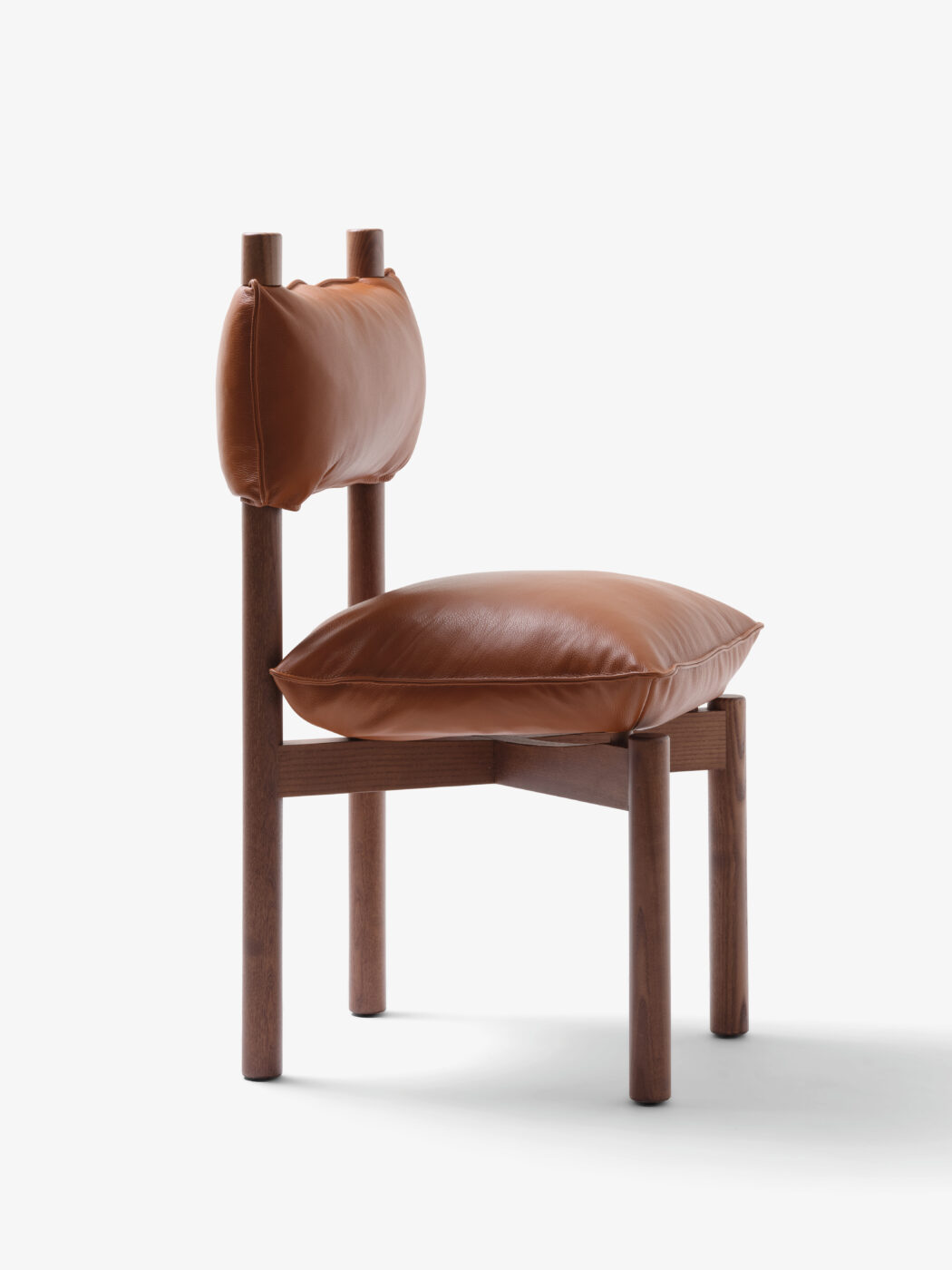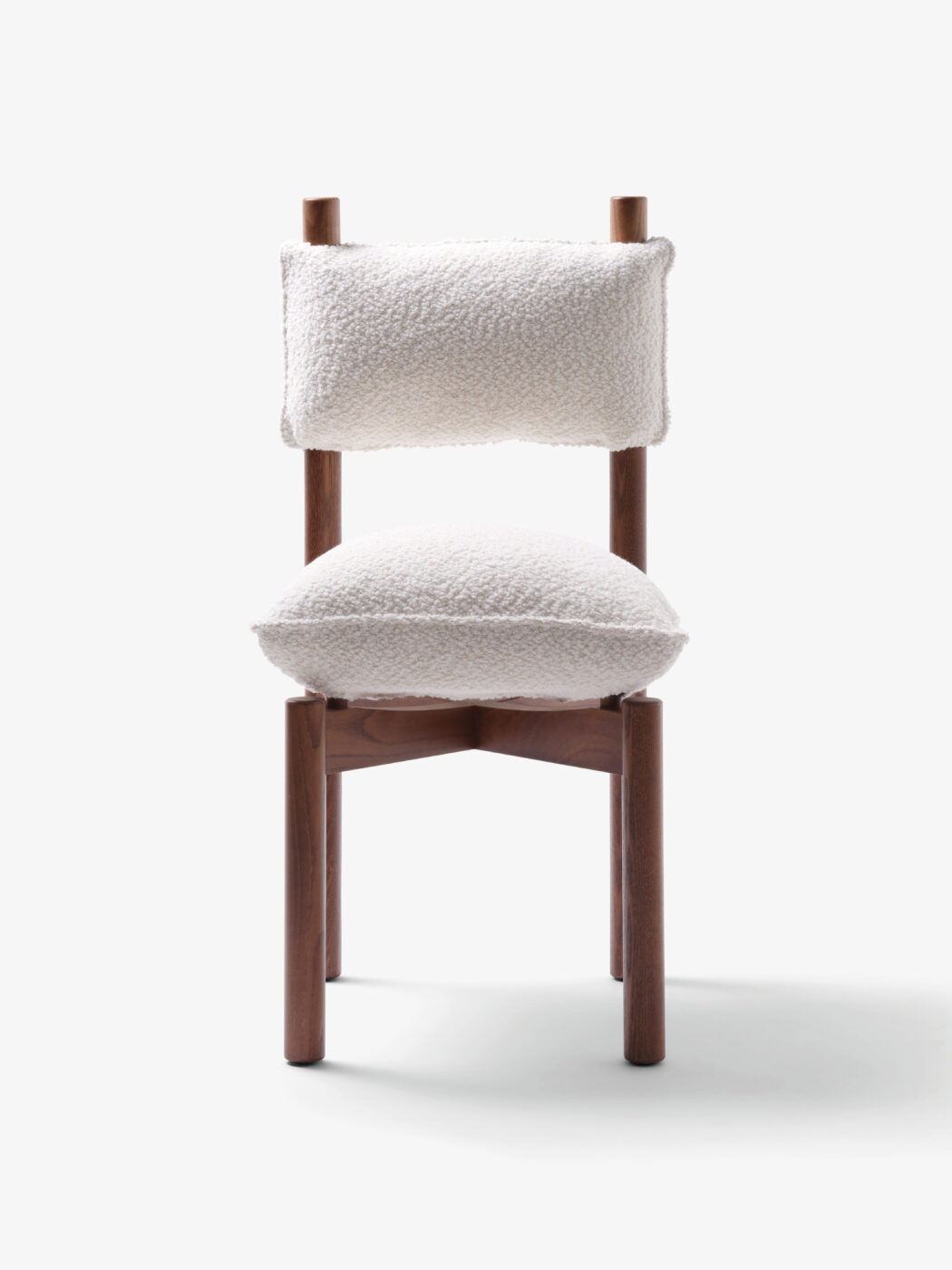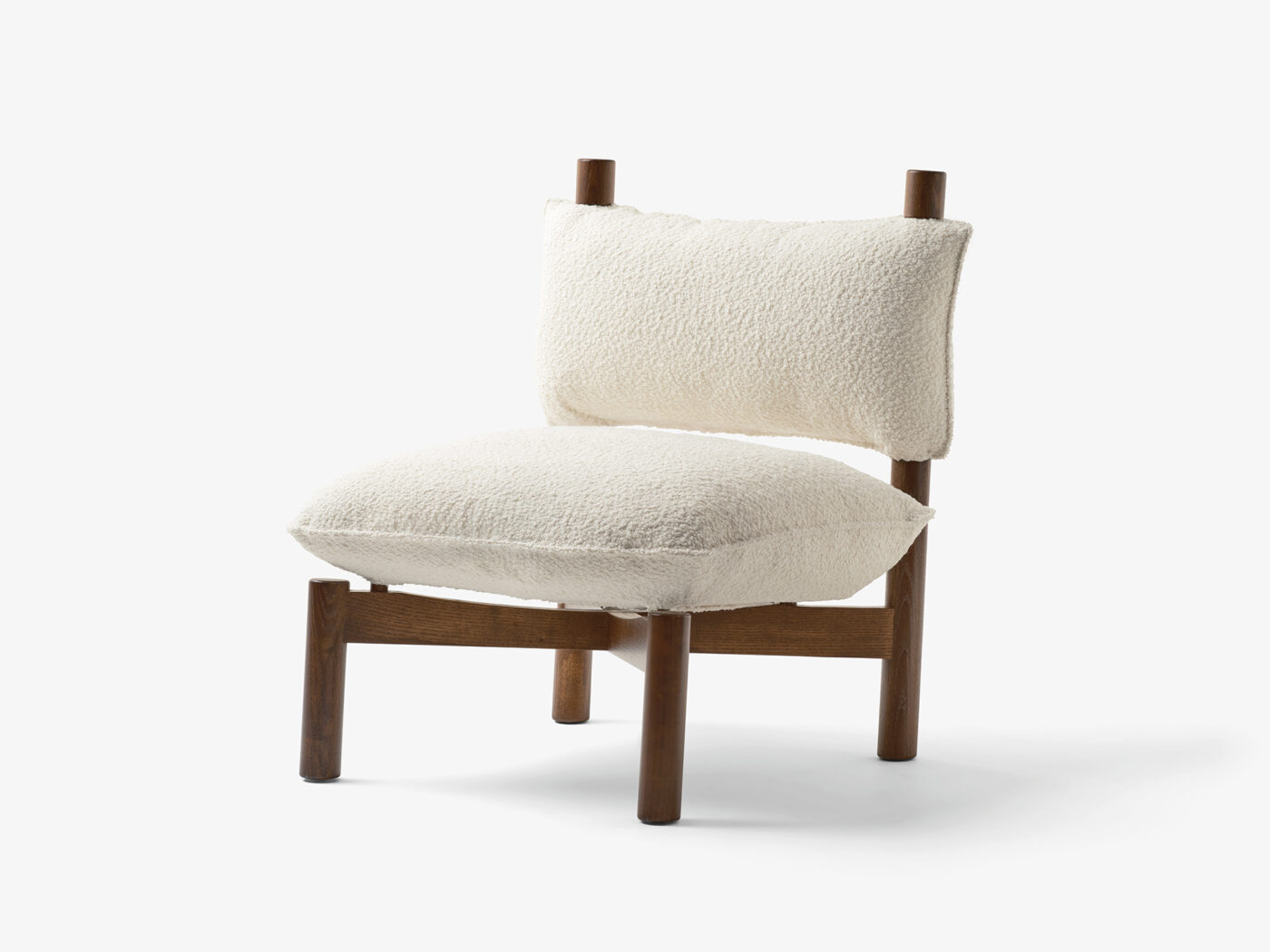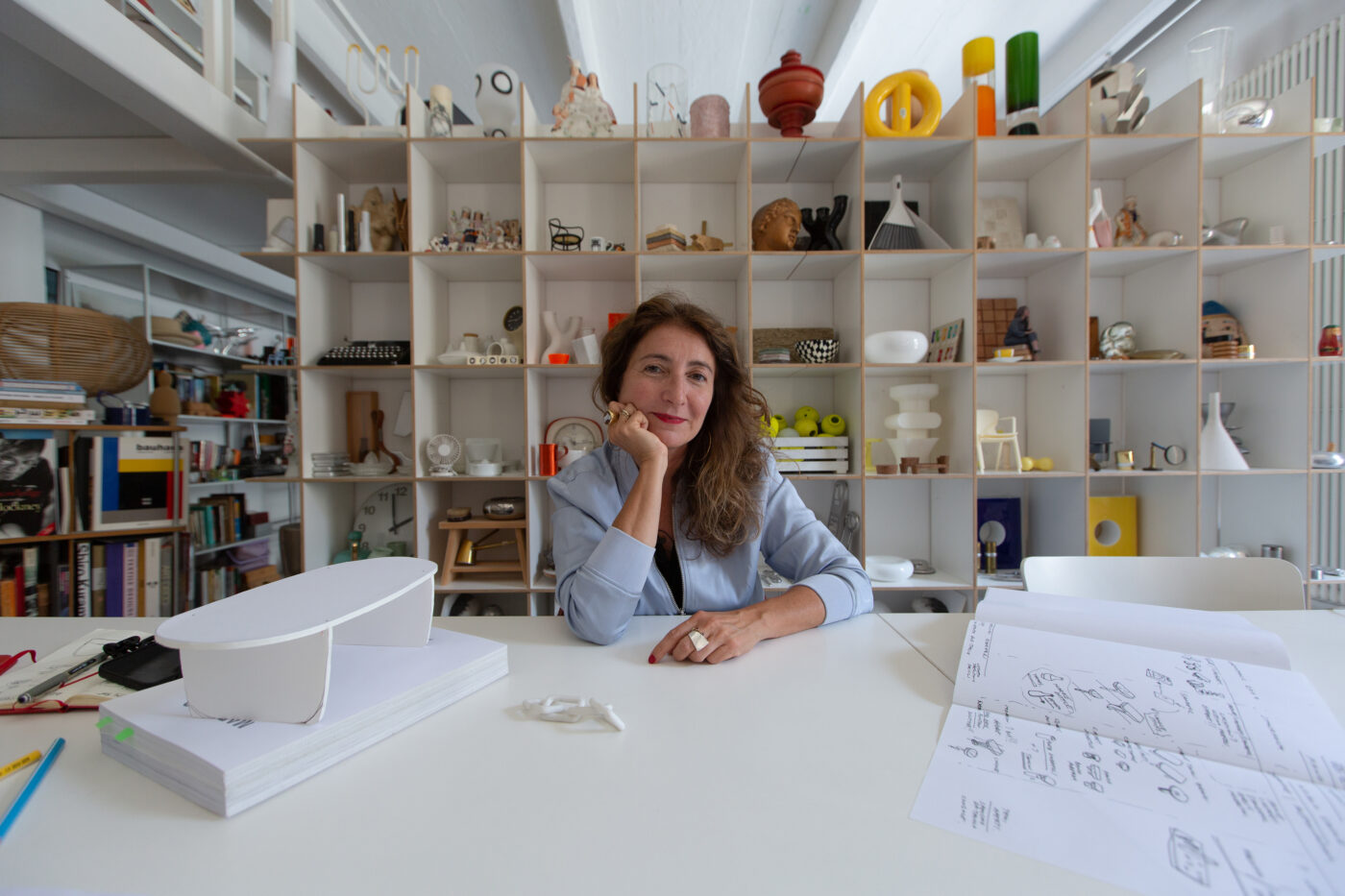Konstantin Grcic: The presentation of your PAF PAF chair caused quite a stir at last year’s Salone del Mobile. The design was completely new in terms of appearance and comfort. This year you are expanding the collection with a lounge chair. How does the new chair differ from its older sister?
Marialaura Irvine: PAF PAF chair was a challenge. No compromises. The form was the result of this process and the lounge chair is a direct consequence: a big cloud to sink into! It has expanded, lowered, while the thickness of the section has increased, but the PAF PAF chair has always been coherent and true to its initial essence: comfort, simplicity and the mixed use of different materials (wood, fabric, feathers). The final result is the continued research of a proportion between the freedom of feathers and the fabric that have been used. In fact, in addition to bouclé, we have included new materials such as cotton fabrics and leather.
KG: I find the lounge chair even more PAF PAF than the original chair. The idea of sitting on a cloud suits this type of low and reclined chair. Good design takes time, especially when you’re creating something different. PAF PAF is based on a very simple idea, but turning it into a product was anything but easy. What was the biggest challenge of the project?
MI: It was not easy to be consistent and not to give in to the use of polyurethane, which makes everything ‘perfect’, which makes everything return to form. PAF PAF looks for the action with the object, the interaction that completes the process. Basically, a human approach that brings the object closer to the people who use it. The complex work was a constant balancing and rebalancing of the sections, the inclination, the size, the number of feathers, the type of fabric, the stitches, the fastenings between the zips, the Velcro, the shape of the inner inserts in the two cushions… In short, we use different materials that behave differently to achieve a common goal: ease of use. Shortcuts are not our method!
KG: Now that the project is finished, can you talk about the kind of environment or situation you would see the PAF PAF lounge being used in… and by whom?
MI: PAF PAF has been described as irreverent. I like this definition because irreverence allows it to blend into any environment. It ‘whispers’, it doesn’t scream style or status. The new lounge version is simply an inviting seat that welcomes you to relax. I can imagine it in the living room of a modern New York penthouse, ‘dressed’ in leather, with a manager smoking a cigar; in the library of a Palladian villa in Veneto, in a sage green textured fabric, with a teenager cross-legged reading King Arthur, in a refuge on the peaks of Mont Blanc, in front of an open fireplace in a bouclé version, with a tired couple sipping a glass of wine, in the lobby of a hotel in Tokyo, with a beige cotton fabric, with children sitting cross-legged, and finally at my home, naked, without fabric to show itself in its integrity, with two pillows for sleeping.
